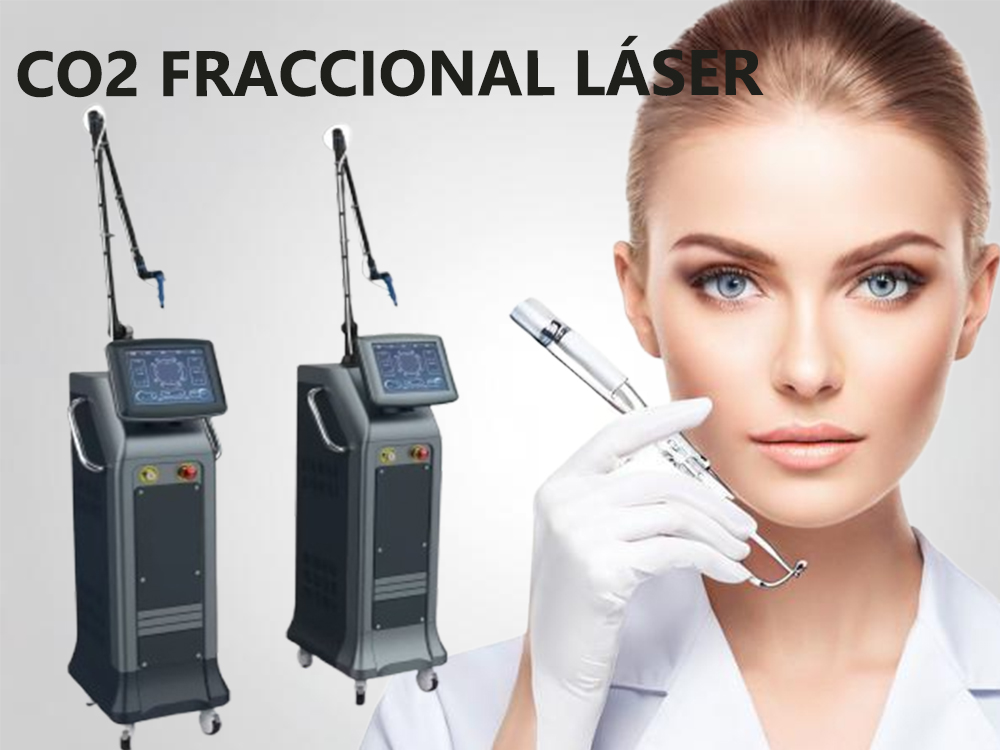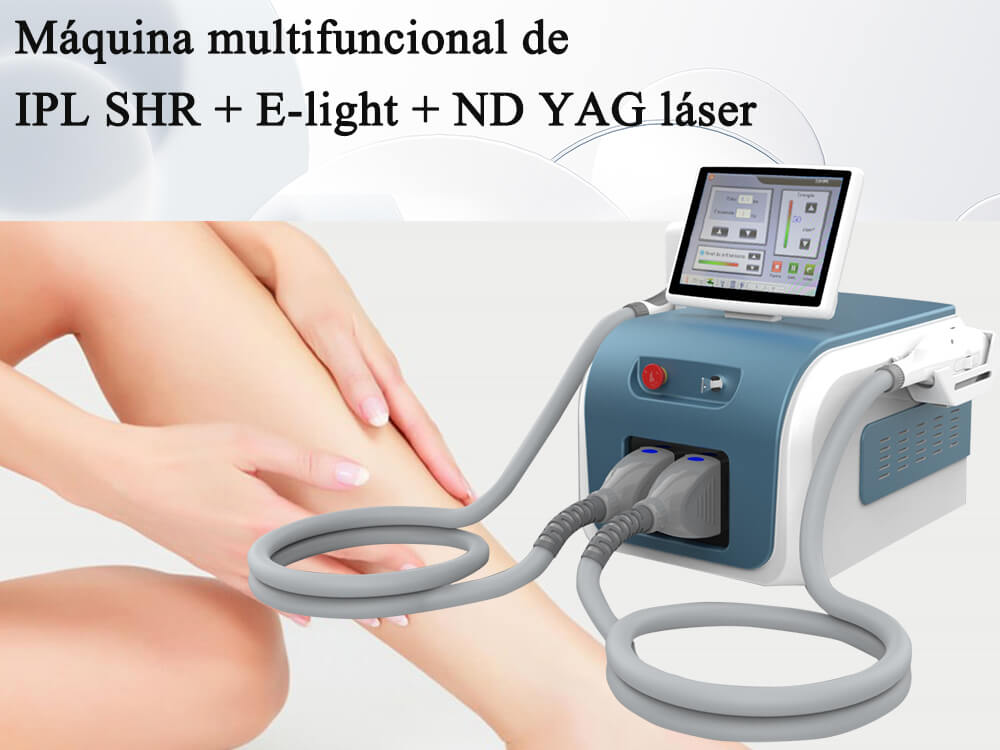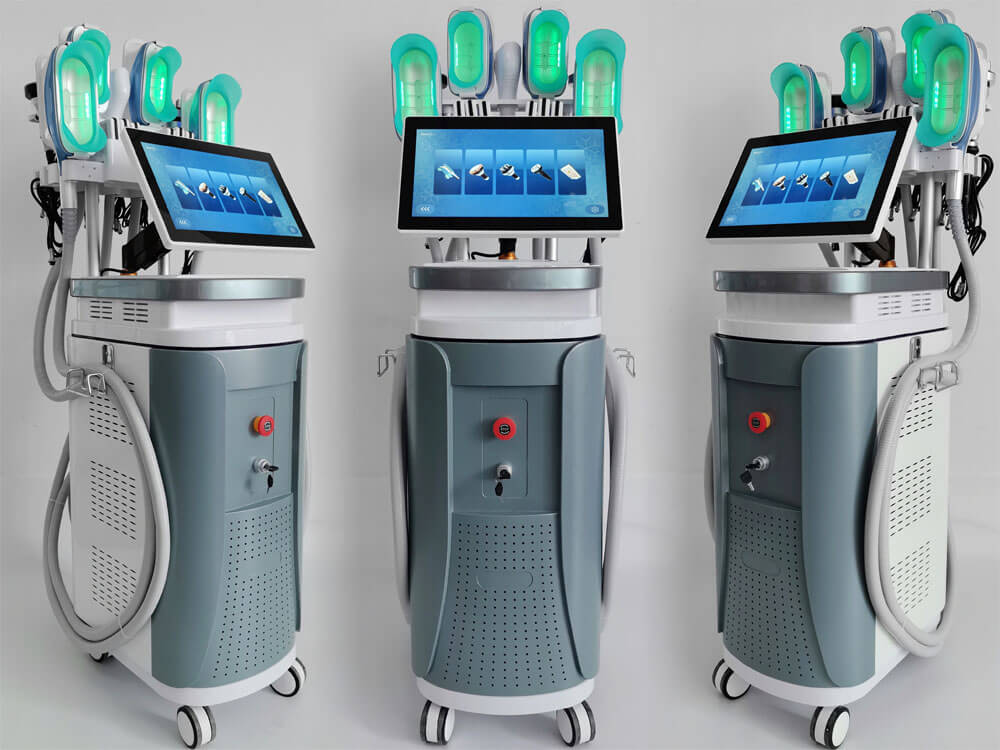Fractional CO2 Laser
Fractional CO2 laser technology is a skin replacement reconstruction technique with higher efficiency and lower risk. Different from traditional chemical and laser skin resurfacing technologies, fractional CO2 laser only damages a small part of the skin while leaving most of the skin intact. These undamaged skin tissues still maintain the ability to repair and can complete skin repair in a short time.
Introduction of Fractional CO2 laser
Fractional Photothermolysis originally meant "focal photothermolysis". In the early days, clinicians in Hong Kong and Taiwan had not seen Fraxel equipment and technology. Through the general idea of the 2004 paper, they learned that it was through "partial, "multiple" and "fragmented", etc. The term Fractional Photothermolysis technology is called focal photothermolysis, and it is still used clinically. Now it is more called fractional laser in clinical practice.
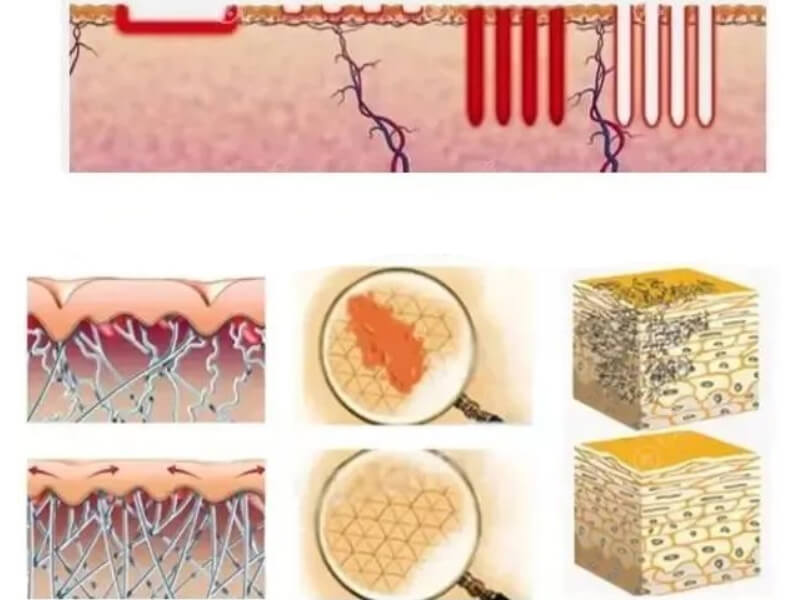
Working theory of Fractional CO2 Laser
After 2007, a variety of ablative and non-ablative fractional lasers with different wavelengths have been gradually applied to the clinic, and the clinical research and use of fractional lasers has opened up. , hemangioma, percutaneous drug delivery and other fields, the application of laser physical energy is linked with the skin healing mechanism, which provides a new field for the clinical application of laser.
Fractional laser only irradiates a small part of the skin, creating a tiny three-dimensional columnar thermal damage zone in the tissue, which is called "Microscopic Thermal Zone" (MTZ). The surrounding tissue remains intact, and rapid repair is achieved through the migration and growth of surrounding active cells. Fractional lasers mainly use water as the target base, rather than skin pigment groups (such as melanin and hemoglobin), so when we analyze the mechanism of fractional action and penetration depth, we should first consider the absorption coefficient of water in this band of lasers.
Different wavelengths of Fractional CO2 Laser
Fractional lasers of different wavelengths produce different tissue responses. A very important factor in this is the difference in the absorption rate of water to these bands.
Fractional lasers can be divided into two categories according to the hydrophilicity of different laser wavelengths: Non-Ablative Fractional Resurfacing and Ablative Fractional Resurfacing.
The wavelength laser with high water absorption rate is exfoliation laser, including erbium yttrium aluminum garnet laser (Er: YAG, 2940nm), carbon dioxide laser (CO2, 10600nm); laser with moderate water absorption rate is non-ablative laser such as erbium Fiber laser 1550nm, thulium fiber laser 1927nm, semiconductor laser 1440nm, neodymium yttrium aluminum garnet laser (ND: YAG, 1064nm).
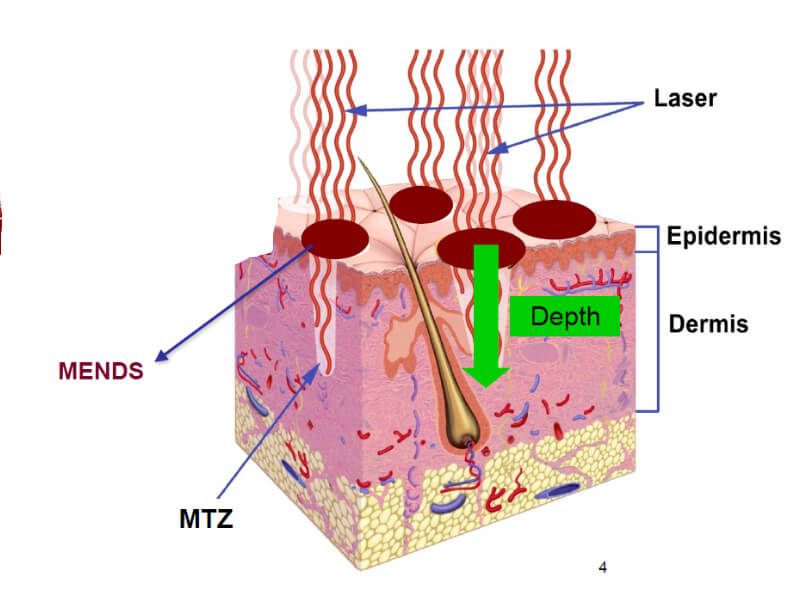 Histological studies have found that nonablative fractional lasers can degenerate the epidermis and dermis columnar and disrupt the junction between the epidermis and the dermis, creating subepidermal fissures within the "mini-thermal damage zone", while the stratum corneum remains intact. (Subepidermal fissures are normal tissue manifestations of non-ablative lattices and cannot be named as micro-ablative lattices because of their presence.) Heat-damaged tissue is replaced by surrounding migrating keratinocytes within 24 hours. The Microscopic Epidermal Necrotic Tissue (MEND) formed in the dermis is an area of tissue coagulation necrosis that is cleared and covered by migrating keratinocytes.
Histological studies have found that nonablative fractional lasers can degenerate the epidermis and dermis columnar and disrupt the junction between the epidermis and the dermis, creating subepidermal fissures within the "mini-thermal damage zone", while the stratum corneum remains intact. (Subepidermal fissures are normal tissue manifestations of non-ablative lattices and cannot be named as micro-ablative lattices because of their presence.) Heat-damaged tissue is replaced by surrounding migrating keratinocytes within 24 hours. The Microscopic Epidermal Necrotic Tissue (MEND) formed in the dermis is an area of tissue coagulation necrosis that is cleared and covered by migrating keratinocytes.
The ablative fractional laser is to form ablated tiny therapeutic cavities. The surface of the cavity is covered with a layer of eschar. The depth of the cavity and the thickness of the coking inner wall vary with the laser pulse and wavelength. An annular region of collagen regeneration is created around the cavity. The stratum corneum is missing after ablative fractional laser irradiation. Over the next 48 hours, re-epithelialization of the collagen-regenerating zone occurred.

In general, the histological differences between exfoliative and non-exfoliative lattices lie in the integrity of the stratum corneum, whether the dermal injury area is degenerated or a vaporized cavity, and the mechanism of tissue repair.
